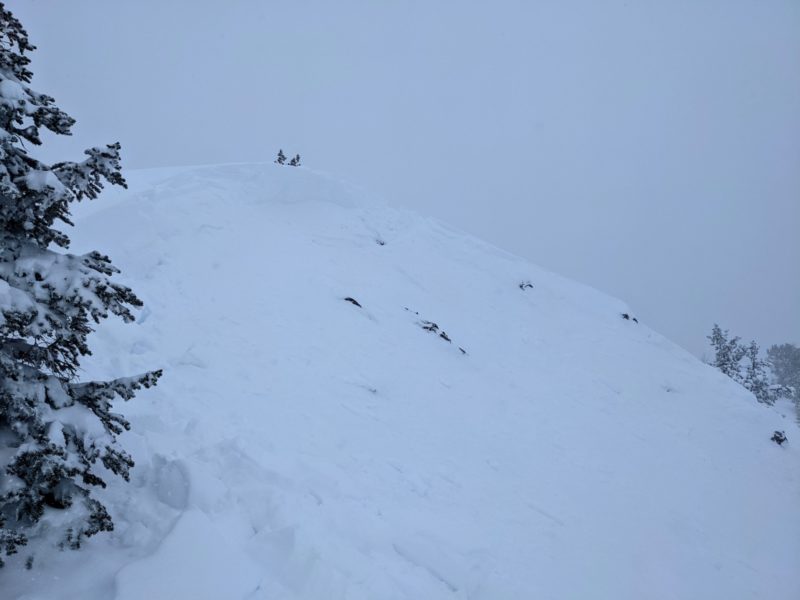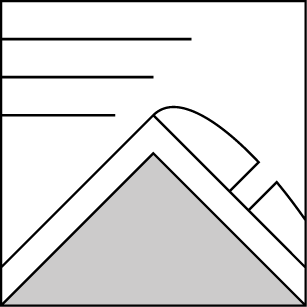Basic Information
Observation Details
Observation Date:
December 12, 2021Submitted:
December 13, 2021Observer:
SAC - VandenBosZone or Region:
Galena Summit and Eastern MtnsLocation:
Titus Ridge (8,700-10,000', SE-E-NE-N-NW)Signs of Unstable Snow
Recent Avalanches?
YesCracking?
IsolatedCollapsing?
IsolatedSnow Stability
Stability Rating:
FairConfidence in Rating:
LowStability Trend:
WorseningBottom Line
An ongoing storm is overloading a highly variable snowpack. Very dangerous conditions existed where the wind had built slabs, particularly where these slabs rested on faceted snow formed during the cold weather of the past week.
Advanced Information
Weather Summary
Cloud Cover:
ObscuredWind:
Moderate , SWNew/Recent Snowfall:
HST=45-50cm at the end of the day.Snowing between S1 and S5 throughout the duration of my afternoon tour, averaging around S2 to S3. Gusty winds blowing moderate to strong out of the SW, moving snow when wind speeds were higher but not doing a ton of slab construction after you moved a bit down from ridgelines.
Avalanche Observations
| # | Date | Location | Size | Type | Bed Sfc | Depth | Trigger | Photos | Details |
|---|---|---|---|---|---|---|---|---|---|
| 1 |
Dec 12, 2021 (Exact) |
Titus Ridge (above Titus Lake) NE 9900ft |
D2 | SS-Soft Slab |
AS-Skier r-Remote |

|
Report |
Snowpack Observations
By the end of the day, settled storm snow tallied 45-50cm. When I left the field this snow was upright (lower density snow on top, higher density snow on the bottom). There was a rough shear in the upper snowpack, hard to call it a density inversion without being able to actually measure density, it behaved more like a change in crystal type (?). In areas where the wind had not transported significant snow (anywhere more than a few hundred feet below ridgelines), I did not see any obvious signs of instability. However, as soon as I entered terrain where the wind had helped the new snow stiffen and gain a bit of structure this picture changed significantly. In these areas, I observed all of the classic signs of instability: cracking, collapsing, and avalanche activity.

Avalanche Problems
| Problem | Location | Distribution | Sensitivity | Size | Comments |
|---|---|---|---|---|---|
 Wind Slab
Wind Slab
|
|
Layer Depth/Date: 80-120cm Weak Layer(s): Dec 11, 2021 (FC) Comments: See avalanche problem comments. |
Hard to know how to describe the problem best. At the time I was out, I'd call it a wind slab problem as signs of instability were only observed where wind terrain was wind loaded. However, as the slab settles, grows with additional snow, and gains a bit of strength it is becoming a storm slab problem. Of course, the problem appears to be much worse in areas where new snow is resting on a 10cm thick pile of facets.
Terrain Use
"Open" terrain is rapidly closing. I had no interest in finding that line and I avoided avalanche terrain entirely.

